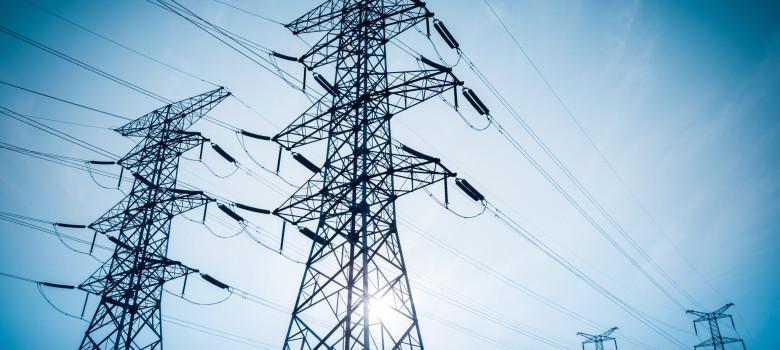
What energy tariff should I be on?
Energy tariffs are complicated beasts. Pence per kilowatt, standing charge, tariff duration, tariff name… Deciding where to start often leaves people utterly bewildered. However, we’re here to strip it back and ensure you get the best possible price for your usage, your property and your lifestyle. After all, everyone is different. It is almost impossible to guarantee yourself the best tariff without going into a bit more detail.
Overview of available energy tariffs
Here we give you a brief overview of all the available tariffs and why some can be good, others bad, depending on your specific situation. See here for a full guide.
Who wants a fixed energy tariff?
These are tariffs that guarantee the customer a set price until a set date. These tariffs can be great, as you have peace of mind that you know how much your bills will be (to a certain extent) until the end date. They are also usually much cheaper that the standard tariffs. However, they aren’t the most flexible available and you may find you don’t benefit from temporary reductions in energy prices – although you should benefit over the course of the tariff due to general trends in global prices. Early exit fees also may cause you to regret your decision to nail yourself down to a long tariff; make sure you do your homework so you know what your getting into.
What about a standard rate energy tariff?
The default tariff is often the tariff that people find themselves on if they move to a new house. If the previous occupier ends his or her contract, the current electricity supplier will simply put the tariff back onto standard. The good thing is that these tariffs don’t require a payment to leave. So moving to a new house, you can quickly change tariff or even supplier without having a pay a leaving charge. It also gives you flexibility if you ever leave the property or are waiting for a better deal elsewhere. However, it isn’t all good news as the standard tariffs are often the most expensive around and can often change in the blink of an eye.
Should I go for an online energy tariff?
For an energy provider, an online customer saves a lot of money and labour. This is why they will often give you a small discount per month on your bills if you switch to online billing. They then send you emails with your bills attached and get you to send in your meter readings every month for up to date readings. Perfect tariff, saves you money and prevents excess paper being used.
 How much do I save on a Dual Fuel energy tariff?
How much do I save on a Dual Fuel energy tariff?
Dual fuel tariffs are when you receive your gas and electricity from the same provider. The good thing about this is that it makes the process easier – one payment each month and usually both fuels are condensed onto one bill giving you less paper and post/emails to deal with. Dual fuel tariffs are also cheaper than single fuel most of the time, and providers try and captures customers for themselves. However, you must still always check and not head blindly straight for a dual fuel tariff. Sometimes it does pay to get your gas from one and your electricity from the other, even though it is slightly more hassle.
Top-up or Pre-pay energy tariff
These are effectively pay-as-you-go tariffs. Much like with you phone bills, pay-as-you-go is easy as it limits you to use the gas and electricity that you can afford at the particular time as you top up when you get low by heading to your local shop or topping up on your phone (only available with some providers). Pay-as-you-go tariffs also make you realise the items and appliances in your home that use the most electricity and gas. However, it is commonly known that pay-as-you-go tariffs are the most expensive tariffs that you can go for, just like mobile phone bills. These tariffs also require a different meter so changing can be quite expensive.
How ‘Green’ is a Green energy tariff?
Green tariffs, on the face of things, are great. However, if you delve a little deeper it the 50% renewable energy that you provider may be promising isn’t quite as good as it seems. The fact of the matter is that electricity that you get through your plugs, is from the most local point of generation. So even if you tariff says 50% renewable electricity but you live next to a fossil fuelled power plant, you will be getting 100% of your electricity from that power plant. The way the provider can do this is by buying 50% of whatever your generation is at an increased cost as it is renewable, it doesn’t mean it is coming to your home. These Green tariffs are almost always more expensive that standard tariffs as a result of them having to counter the additional cost they spend in buying the renewable electricity.
Standing charge and unit rate
One of the most important things to look at, which often gets ignored, is the pricing within the tariff. Many just look at the unit price and base their decision on that. However, in many cases the tariffs with low unit prices have high standing charges. So which to go for? High standard charge & low unit price, or low standing charge & high unit price. The choice is based on your usage. You will be paid your standard charge no matter how much energy you use. So in holiday homes it would make sense to go for a small standing charge with a higher unit price, as you won’t be using as much energy over the course of the year. However, if you are a high user, perhaps retired and always in the property then you should look for high standing charge and low unit prices.
What tariff are we on?
Nick: “We have a pretty high unit price with a low standard charge at home. This is because we’ve become pretty energy efficient over the past few years. Swapping halogen bulbs to LEDs mean that high unit prices don’t really affect us like they used to, so we’ve benefitted through the low standing charge. Think we’d be paying through the roof if we were not efficient though.”
Alan: “First Utility fixed until March 2016. They’ve just offered a fixed 3 year tariff but the price increase was ridiculous so I’ll stick with the year by year fixed tariffs. I went with a very low unit price as I tend to get through quite a lot, however the standing charge isn’t too bad either.”
Henry: “Fairly low user to be honest. Working most of the day so don’t use much energy Monday to Friday. The weekends I’m usually out and about as well so it benefits me to have a lower standing charge and slightly higher unit price. Although I’m on quite a good deal at the moment so it’s all pretty good. Energy efficient as well with LED bulbs and lots of thick jumpers for the winter.”
James: “Heavy usage! Not me though, I try to keep costs down but while I’m out I swear the cats turn all the lights and electrical appliances on. Anyway, electricity usage tends to be pretty high but gas for the central heating is low. We installed external solid wall insulation before the winter so we’ve hardly had the heating on.”
Think we missed something? Do you have a different opinion?
Comment below to get your voice heard…











No Comments yet! Be the first one.